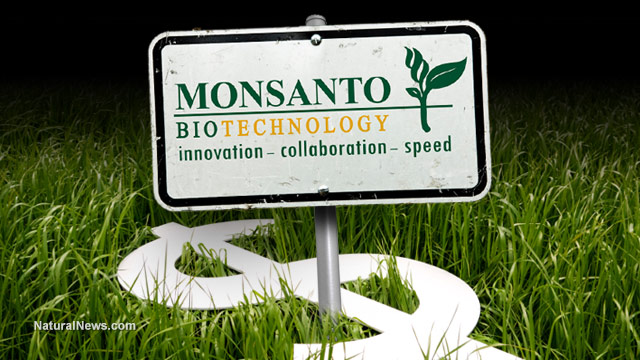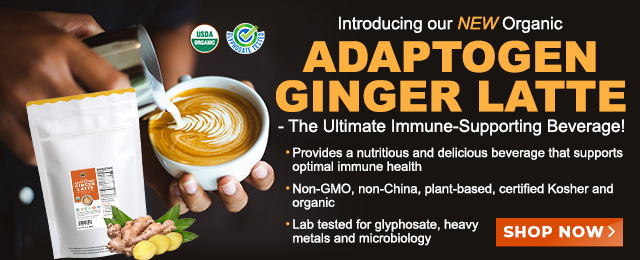Monsanto's sealed documents reveal the truth behind Roundup's toxicological dangers
Tuesday, March 15, 2016 by: Natural News Editor
Tags: Monsanto, Roundup, toxicology studies

(NaturalNews) The year 2015 hasn't been kind to Monsanto. In March, the World Health Organization declared that the company's flagship product, its herbicide glyphosate or Roundup, is a probable human carcinogen. Increasingly, national health ministries are taking a hard second look at glyphosate's health and environmental dangers and efforts are underway to ban the herbicide.[1] To protect its citizens, last year the Netherlands, Bermuda and Sri Lanka have either banned or imposed strict limits on Roundup. Last June, France banned its use in gardens. Brazil, Germany and Argentina are considering legislative bans. And this month, California's environmental protection agency launched plans to label Roundup as a carcinogen.[2] (Story by Richard Gale and Gary Null, republished from PRN.fm.)
Glyphosate is the most widely used herbicide in the world today. Over 130 countries currently permit extensive use of the chemical. The US is the largest consumer, using approximately 20% of the world's Roundup.[3] The latest reliable figures from the US Geological Survey record 280 million pounds of Roundup were used in 2012, nearly a pound for every American.[4] In 2013, gross profit of $371 million on crop chemicals including Roundup climbed 73% due to a 37% increase in sales. That same year Monsanto's net income rose 22% to $1.48 billion.[5]
Over the years a large body of independent research has accumulated and now collectively provides a sound scientific rationale to confirm that glyphosate is far more toxic and poses more serious health risks to animals and humans than Monsanto and the US government admit. Among the many diseases and health conditions non-industry studies identified Alzheimer's, Parkinson's and autism since Roundup has been shown to instigate aluminum accumulation in the brain. The herbicide has been responsible for reproductive problems such as infertility, miscarriages, and neural tube and birth defects. It is a causal agent for a variety of cancers: brain, breast, prostate, lung and non-Hodgkin lymphoma. Other disorders include chronic kidney and liver diseases, diabetes, heart disease, hypothyroidism, and leaky gut syndrome. In addition to lung cancer, glyphosate may be responsible for today's growing epidemics of chronic respiratory illnesses among farm workers and their families. However, these findings derive from outside the Big Agriculture industry. Private industries routinely defend themselves by positing their own research to refute independent reports. Consequently, for several decades it has been a he-said-she-said stalemate. Monsanto is content with this. It can conduct business as usual, Roundup sales increase, and the debates and media wars continue without government interference. Then who is protecting the public?
Government officials and health regulators more often than not simply ignore these studies even if published in peer-reviewed journals. The bulk are independently funded. Most have been performed in foreign nations and therefore American bias dismisses them outright. Furthermore, Monsanto and other large chemical agricultural companies are quick to counter and discredit adverse scientific findings. The company has the financial means to retain large international PR firms, such as Burson-Marsteller and Fleishman Hillard, consultation firms and think tanks, as well as large armies of hired trolls and academic spokepersons to mobilize damage control upon notice and protect the integrity of Monsanto's products and public image. It funds and orchestrates self-serving research at universities and research laboratories to increase an arsenal of junk science. And of course it has Hillary Clinton and Bill Gates as its celebrity cheerleaders.
The EPA continues to align itself with Monsanto's safety claims and limits glyphosate's risks to kidney, reproductive and carcinogenic damage; and the warning only applies for very long-term exposure to high levels of the toxin. Anything under that is considered harmless. The EPA continues to approve small amounts of glyphosate as safe in drinking water to children. Its safety level is 0.7 ug/L. This was determined back in 1994, and after 20 years of further research into glyphosate's biomolecular activities and health risks, the level has remained the same.[6] A review of existing data sponsored by Moms Across America found that out of 21 drinking water samples analyzed, 13 had glyphosate levels between 0.08 and 0.3 ug/L, well below the EPA's limit, but significantly above the European Union's limit of 0.1 ug/L.[7]
While the company manages to successfully dodge scientific research outside its purview, the tables would certainly turn if it could be proven in a court of law that Monsanto has known for decades that glyphosate is one of the most toxic substances ever launched on the public, which adversely affects almost every tissue and cell in a mammal's body.
Read more at PRN.fm.
Sources:
[1] ScientificAmerican.com
[2] RT.com
[3] OrganicConsumers.org
[4] EWG.org
[5] Bloomberg.com
[6] EPA.gov[PDF]
[7] MomsAcrossAmerica.com
Monsanto at FETCH.news
Get independent news alerts on natural cures, food lab tests, cannabis medicine, science, robotics, drones, privacy and more.
Take Action: Support Natural News by linking to this article from your website
Permalink to this article:
Embed article link: (copy HTML code below):
Reprinting this article:
Non-commercial use OK, cite NaturalNews.com with clickable link.
Follow Natural News on Facebook, Twitter, Google Plus, and Pinterest
- Newly released JFK files reveal Pentagon's role in creating Lyme disease and covid in the same lab
- Trump nominates VACCINE ZEALOT Susan Monarez to lead the CDC, sidelining RFK Jr.'s reform efforts
- BEWARE: USDA allows genetically engineered vaccines to infiltrate organic food production
- Obama accused of laundering USAID funds to fuel global protest movements, regime change operations
- HUGE: Putin claims 2020 election fraud in U.S. sparked Ukraine war, calls for peace talks with Trump
- Chris Rufo finally reveals abuse liberals unleashed on his wife and young kids...
- Deep State in disarray: Trump's funding freeze sows chaos, Democrats vow legal battle
- Trump shows his true colors
- STARDUST, a secretive Israeli-US startup, plans risky solar geoengineering experiment to BLOCK OUT THE SUN
- $2B Roundup verdict: A landmark blow to Bayer and a win for health freedom
- Trump's greatest betrayal so far: Accelerating Middle East wars, silencing dissent, and serving Zionist masters
- Outrageous government fraud: $312M in COVID loans went to children as young as 9 months old
- Festive flavors: The sweet history, nutritional profile and health benefits of pecan pie
- “Behind the Green Mask”: Rosa Koire exposes the hidden agenda of UN Agenda 21
- SWEET SABOTAGE: CIA's secret war on Soviet sugar revealed in JFK files
- Dr. Mike Yeadon releases 15-minute testimony - WATCH - about genocidal intent of COVID “vaccines”
- “Forever chemicals” in drinking water drive alarming cancer surge, new study warns
- A mysterious startup is developing a new form of solar geoengineering
- Elon Musk: Aliens could be here on Earth RIGHT NOW
- EPA advisor admits the agency is funneling billions to climate groups ahead of Trump’s return to White House
- Trump reverses course on Gaza plan, says “nobody is expelling Palestinians”
- Reclaim your health: How midlife exercise reverses years of inactivity
- A lack of integrity in Academia: Harvard professor found GUILTY of fraudulent research to promote CRT theory
- Space war brewing? Russia threatens to destroy Starlink satellites
- Big Pharma's $8 Billion bribery scheme exposed: how doctors are pushed to prescribe junk science, not heal
- Mike Adams Sermon 66: God will DESTROY ISRAEL for its wickedness
- Rep. Nancy Mace introduces bill to ban biological males from female facilities on federal property
- Survival 101: Effective EMF blocking techniques
- 5 Simple steps to boost your brainpower: How to strengthen executive function in a distracted world
- Historian warns Israel may be entering an “IRREMEDIABLE DECLINE”
- Florida takes a stand: DeSantis proposes permanent ban on mRNA vaccine mandates
- RFK Jr.'s SSRI antidepressant investigation sparks liberal meltdown, exposes Big Pharma's dangerous game
- New York politicians push bill allowing governor to indefinitely detain the unvaccinated on a whim
- Sales of survival bunkers rise following Russia’s use of the Oreshnik hypersonic ballistic missile
- Pilots report mysterious lights 'moving at extreme speeds' across Oregon skies
- Newly released JFK files reveal Pentagon's role in creating Lyme disease and covid in the same lab
- EPA advisor admits the agency is funneling billions to climate groups ahead of Trump’s return to White House
- The Health Ranger releases “Vaccine Zombie” song and music video, using AI-animated zombies for the music video
- The pandemic as a tool for INDOCTRINATION: Understanding “The Indoctrinated Brain” by Dr. Michael Nehls
- California's social media censorship law struck down: A victory for free speech or a threat to online safety?
- Dr. Mike Yeadon releases 15-minute testimony - WATCH - about genocidal intent of COVID “vaccines”
- Congratulations to the FULLY UNVACCINATED as you resisted the COVID-19 PROPAGANDA MACHINE fueled by over $100 BILLION
- Mike Adams releases country western hit single: Goin’ Back in Time is Comin’ Home
- RFK Jr. clears key hurdle: Sen. Susan Collins backs controversial HHS nominee, signaling a new era for health policy
- Mike Adams releases music poetry sensation: A Child of God
- Mike Adams releases new song and music video: Nothing More Disgusting Than a Globalist
- Unpacking the Lies That We’ve Been Fed – new song and music video released by Mike Adams, the Health Ranger
- Trump administration takes on global censorship: A new frontier for free speech advocacy
- Florida takes a stand: DeSantis proposes permanent ban on mRNA vaccine mandates
- “Why we influenced the 2020 elections”: Facebook files reveal the coordinated effort to bury the Hunter Biden laptop story
- Ex-FBI Chief EXPOSES disgraceful government coverups of Oklahoma City Bombing, Kennedy assassinations, 9/11 WTC, and "Terrorism" as plot to destroy Constitution
- Michigan sheriff announces criminal investigation into 2020 election crimes, Dominion Voting Systems
- Israeli soldiers accused of even more torture and abuse in the West Bank
- Federal judge backs Trump's mass firings, clearing path for government downsizing
- Red Cross issues warning to stop blood plasma donations from vaccinated people
- Scientists confirm: GENIUS brain function can be spontaneously unleashed in humans without any apparent cause
- EPA advisor admits the agency is funneling billions to climate groups ahead of Trump’s return to White House
- HYSSOP: What research reveals about the health benefits of this ancient holy herb
- Two containers with completed ballots fall out of truck in Florida
- Fully vaccinated about to see “tsunami” of illness and death, warns virologist
- Today I asked our AI language model “Neo” about which phytonutrients or phytochemicals can block the spike protein related to SARS-CoV-2 … Here is what it answered…
- Global leaders unite to clamp down on “misinformation” with UN-backed Cascais Declaration
- BREAKING: 2025 NDAA authorizes mandatory military draft of WOMEN across America… as Pentagon pursues global NUCLEAR war with both Russia and China at the same time
- Michael Yon warns of a ZIONIST TAKEOVER in Trump’s second administration
- BOMBSHELL: DNA testing kits are a SCAM to develop ethnic-specific bioweapons
- Ozempic and Wegovy weight loss drugs are injectable LIZARD VENOM PEPTIDES that may unleash a devastating wave of organ failure… side effects align with symptoms of SNAKE BITES
- Israeli soldiers accused of even more torture and abuse in the West Bank
- These 13 countries just signed an agreement to engineer a global FAMINE by destroying food supply
- NASA admits that climate change occurs because of changes in Earth’s solar orbit, and NOT because of SUVs and fossil fuels
- RFK Jr. clears key hurdle: Sen. Susan Collins backs controversial HHS nominee, signaling a new era for health policy
- Sermon 30: How Jesus reveals Caesar’s FAKE CURRENCY and FALSE AUTHORITY
- Coriander seeds: Ancient medicine backed by modern science
Science News & Studies
Medicine News and Information
Food News & Studies
Health News & Studies
Herbs News & Information
Pollution News & Studies
Cancer News & Studies
Climate News & Studies
Survival News & Information
Gear News & Information
News covering technology, stocks, hackers, and more



"Big Tech and mainstream media are constantly trying to silence the independent voices that dare to bring you the truth about toxic food ingredients, dangerous medications and the failed, fraudulent science of the profit-driven medical establishment.
Email is one of the best ways to make sure you stay informed, without the censorship of the tech giants (Google, Apple, Facebook, Twitter, YouTube, etc.). Stay informed and you'll even likely learn information that may help save your own life."
–The Health Ranger, Mike Adams











































